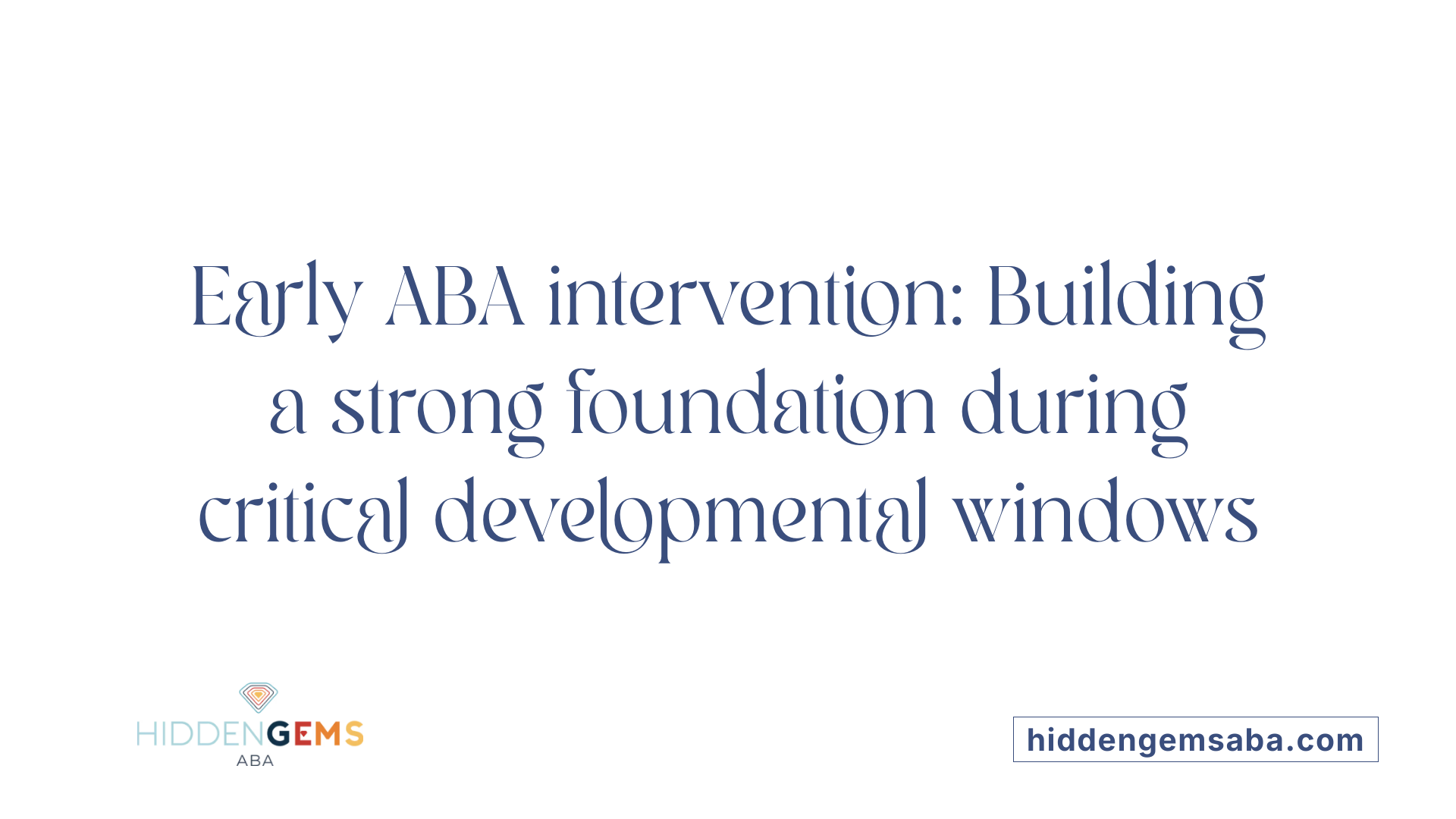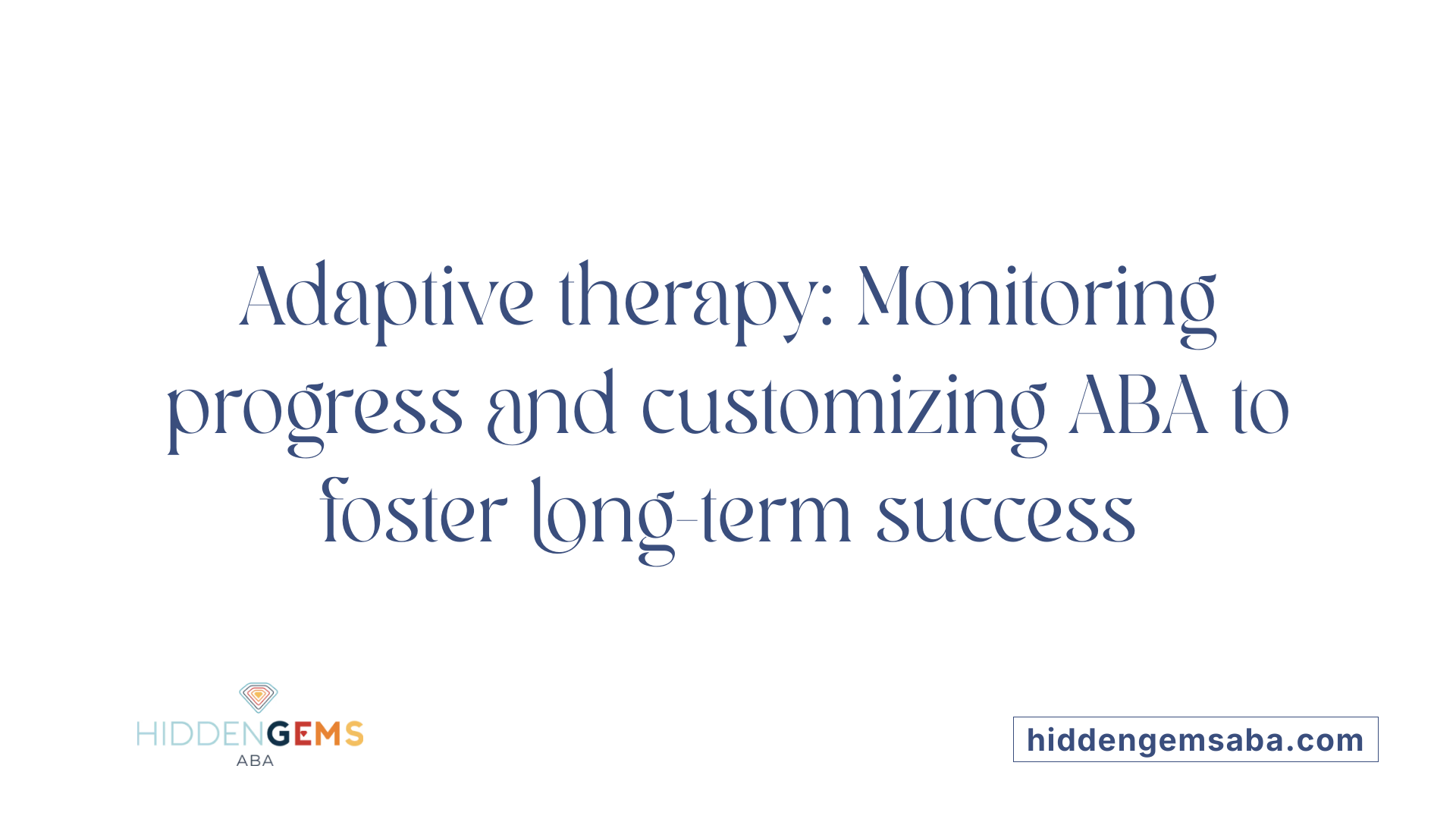Understanding ABA Therapy and Its Enduring Impact
Applied Behavior Analysis (ABA) therapy has become widely recognized as an evidence-based treatment for children with autism spectrum disorder (ASD). Rooted in the science of learning and behavior, ABA therapy not only enhances essential skills in children but also positively influences family dynamics. This article explores the long-term benefits of ABA therapy for both children and their families, highlighting its personalized approach, effectiveness, and role in fostering independence and social success.
Foundations of ABA Therapy: Scientific Approach and Individualized Treatment
What is ABA Therapy and Its Scientific Basis?
Applied Behavior Analysis (ABA) is a therapy grounded in the science of learning and behavior. It focuses on understanding how behaviors occur and how they are influenced by the environment around an individual. By studying these interactions, ABA helps promote beneficial behaviors and reduce harmful or obstructive ones.
How Does the A-B-Cs Model Work in ABA?
A fundamental strategy in ABA is analyzing behaviors using the A-B-Cs model, which stands for Antecedent, Behavior, and Consequence. The antecedent is what happens before a behavior, the behavior is the action itself, and the consequence follows the behavior. This framework helps identify patterns and teach new skills by modifying what triggers actions and the outcomes that reinforce them.
How Are ABA Programs Customized?
Every ABA program is tailored to the unique needs of the individual. This customization comes from thorough assessments conducted by trained Board Certified Behavior Analysts (BCBAs). These assessments consider the child's strengths and challenges across areas like communication, social skills, motor abilities, and daily living. The tailored goals evolve based on ongoing progress monitoring.
What Is the Role of Board Certified Behavior Analysts (BCBAs)?
BCBAs play a critical role in designing and overseeing ABA therapy. They carry out comprehensive evaluations, set personalized treatment plans, and regularly review collected data to adjust strategies. Their expertise ensures therapy remains effective and responsive to the child’s development.
How Flexible Are ABA Therapy Methods and Settings?
ABA therapy is highly adaptable and can be delivered across settings including the home, school, and community. It utilizes various methods such as one-on-one sessions or group instruction. This flexibility ensures therapy fits the child's lifestyle and maximizes learning opportunities within natural environments.
Developing Essential Life Skills Through ABA

How does ABA therapy teach self-care routines like dressing, toileting, and hygiene?
ABA therapy uses structured techniques such as natural environment training and direct instruction to teach essential self-care tasks. Therapists break down routines like dressing, using the bathroom, and personal hygiene into small, manageable steps. Positive reinforcement is employed to encourage children as they master each step, making learning these skills engaging and rewarding.
What role do natural environment training and direct instruction play in daily living skills?
Natural environment training allows children to practice skills in familiar settings, like their home or school, enhancing real-world application and retention. Direct instruction provides clear, focused teaching sessions that target specific life skills. Together, these methods ensure children not only learn but can independently perform daily tasks in their everyday environments.
How does ABA therapy promote independence and confidence in daily tasks?
By consistently reinforcing achievements and providing opportunities for practice, ABA therapy builds a child's confidence in their abilities. Gaining competence in daily routines reduces reliance on caregivers and fosters self-reliance. This empowerment encourages children to take initiative and participate actively in their own care and routines.
What are the long-term impacts of ABA therapy on a child's self-reliance and functionality?
Children who engage in ABA therapy often develop improved independence and functionality over time. Mastery of self-care tasks contributes to greater autonomy, improved social participation, and enhanced quality of life. The skills learned support transitions into more complex daily responsibilities and promote greater success in academic and social settings.
Enhancing Communication and Social Interactions
How does ABA therapy improve language and communication skills?
ABA therapy uses positive reinforcement to encourage language development by rewarding children when they use words or gestures effectively. Techniques include praise, tangible rewards, and engaging visual aids such as picture cards and games, making learning interactive and motivating. These strategies help children express their needs and thoughts more clearly, reducing frustration and improving overall communication.
What methods does ABA use to make learning engaging?
Besides positive reinforcement, ABA therapy incorporates visual supports like schedules and cards that help children anticipate and understand communication tasks. These aids simplify complex language concepts and allow children to participate actively, enhancing retention and encouraging consistent practice.
How does group learning support social skills development in ABA?
ABA group sessions provide a safe environment for children to practice social skills such as sharing, taking turns, greeting peers, and making eye contact. These social interactions are broken down into manageable steps, allowing children to gain confidence gradually. Group learning also fosters friendships, reducing feelings of isolation commonly experienced by children with autism.
In what ways does ABA help children understand social cues and improve conversational skills?
Through targeted exercises, children learn to recognize body language, sarcasm, and social signals that are often difficult for those with autism. ABA helps develop reciprocal conversations, teaching children to listen, respond appropriately, and engage in meaningful social exchanges. This prepares them for real-world interactions, boosting independence and self-esteem.
What are the long-term social benefits of ABA therapy?
Research shows that children who participate in ABA therapy experience improved relationships with peers and adults alike. By reducing communication barriers and enhancing social understanding, ABA diminishes frustration and behavioral challenges. These gains support smoother integration into school and community settings, leading to more fulfilling social experiences throughout life.
The Importance of Early and Intensive Intervention

Why is early ABA therapy beneficial during critical developmental windows?
Early intervention with ABA therapy takes advantage of critical developmental periods to build foundational skills. Starting therapy early helps address communication delays and reduces the likelihood of entrenched challenging behaviors such as tantrums. By focusing on skill development during these windows, children gain essential abilities that set the stage for future learning and social success.
How does ABA therapy address communication delays and challenging behaviors?
ABA therapy targets communication delays by teaching children alternative ways to express themselves using methods like positive reinforcement and visual aids. It systematically reduces challenging behaviors by analyzing their antecedents and consequences, replacing harmful behaviors with helpful skills. This method supports children in developing better emotional regulation and more constructive ways of interacting.
What is the impact of intensive ABA programs on cognitive and daily living skills?
Intensive and long-term ABA therapy programs have been shown to significantly improve cognitive functions, language skills, and daily living abilities. These programs focus on areas such as self-care, social interaction, and academic skills. As a result, children often gain independence in everyday tasks like dressing, toileting, and following instructions, which boosts confidence and participation.
What scientific evidence supports the outcomes of early ABA intervention?
Research consistently supports ABA as an evidence-based approach that produces meaningful improvements when initiated early. Organizations like the US Surgeon General and the American Psychological Association endorse ABA therapy for its effectiveness in improving socialization, communication, and adaptive behaviors. Studies demonstrate that children receiving early and intensive ABA show gains in cognition, expressive language, and daily living skills, highlighting its long-term benefits.
Family Involvement and Strengthened Relationships

What is the role of parents and caregivers in ABA therapy success?
Parents and caregivers play a crucial role in the success of ABA therapy. Their active involvement ensures that strategies learned during sessions are consistently applied throughout the child's daily routines. This consistent practice helps the child generalize and maintain new skills beyond therapy settings, making progress more meaningful and long-lasting.
How are families trained to implement ABA strategies at home?
ABA therapists provide training and guidance to families, equipping them with practical techniques tailored to their child's needs. This includes teaching how to use positive reinforcement, apply visual aids like picture cards or schedules, and manage challenging behaviors. Families learn how to integrate these methods into everyday activities, such as mealtime or play, fostering an environment conducive to learning and growth.
How does ABA therapy reduce family stress?
Improvements in a child's communication, behavior, and independence through ABA therapy often lead to a noticeable reduction in family stress. As children acquire better ways to express their needs and manage emotions, families face fewer conflicts and misunderstandings. This smoother daily dynamic helps lower frustration for everyone involved and creates a more peaceful home atmosphere.
In what ways does ABA therapy enhance family bonds and daily interactions?
Through enhanced communication and behavioral improvements, ABA therapy strengthens family relationships. When children are better able to communicate and participate in daily tasks, families experience increased quality time and more positive interactions. Additionally, caregivers gain confidence and skills that empower them to support their child's ongoing development, deepening emotional connections and fostering a supportive family environment.
Continuous Monitoring, Customization, and Long-Term Progress

How is progress monitored and treatment goals adjusted in ABA therapy?
One of the foundations of successful ABA therapy is ongoing data collection. Board Certified Behavior Analysts (BCBAs) regularly gather detailed information on a child's behavior and skill development during therapy sessions. This rigorous data monitoring allows the BCBA to track progress towards established goals accurately.
Based on this ongoing analysis, treatment goals are dynamically adjusted to better match the child's current abilities and challenges. This flexible approach ensures that therapy remains relevant and effective, promoting steady growth.
How do ABA treatment plans evolve with the child's development?
ABA programs are highly individualized and designed to evolve as the child grows and their needs change. Initially, the therapy might focus on foundational skills such as communication or basic self-care. As the child progresses, the plan adapts to include more complex abilities like academic skills, social interactions, and executive functioning.
This adaptability is crucial because it allows the ABA program to grow alongside the child's developing strengths and challenges, maintaining a personalized and effective approach.
What role does the flexibility of ABA programs have over time?
ABA therapy's flexibility extends beyond customization—it is also adaptable in setting and delivery methods. Whether offered one-on-one, in groups, or across environments like home, school, or community settings, the therapy adjusts to optimize learning.
Such flexibility ensures ABA remains suitable throughout different life stages, enabling continuity and consistency in intervention even as contexts shift.
What evidence supports the long-term effectiveness of ABA therapy?
ABA therapy has earned recognition as an evidence-based best practice by authoritative organizations such as the US Surgeon General and the American Psychological Association. Research highlights that intensive and sustained ABA therapy produces significant improvements in cognitive abilities, language, daily living skills, and behavior management.
This strong scientific validation offers families confidence in ABA’s capacity to deliver meaningful, long-term developmental benefits for children with autism spectrum disorder.
Insurance, Accessibility, and Choosing Quality ABA Providers

Overview of insurance coverage including private insurance and Medicaid
Insurance coverage for ABA therapy varies, but many private insurance plans and Medicaid programs provide benefits when ABA is prescribed by a medical professional and determined to be medically necessary. Families should review their individual insurance policies to understand coverage details, limits, and whether prior authorization is required.
Guidance on finding qualified ABA providers
To find qualified ABA providers, families can start by consulting with their child's medical providers for referrals. Checking insurance provider directories and using resource guides from autism advocacy organizations can also help identify local ABA programs staffed by licensed and Board Certified Behavior Analysts (BCBAs). Visiting providers and reviewing their credentials is important to ensure a good match for the child's needs.
Key questions families should ask providers to ensure therapy quality and fit
Families are encouraged to ask potential ABA providers about their experience with similar cases, how individualized treatment plans are developed, and the frequency of progress reviews. Questions about parent involvement, data collection methods, and how therapy is adapted over time can help families understand the quality and effectiveness of the services offered.
Role of medical prescription and medical necessity in ABA access
Access to ABA therapy often requires a formal medical prescription or recommendation, along with documentation of medical necessity. This process helps insurance companies justify coverage and ensures that ABA is provided to children who will benefit most from its evidence-based approach.
Long-Term Empowerment Through ABA Therapy
ABA therapy stands out as a transformative, evidence-based approach that fosters meaningful and sustainable growth for children with autism spectrum disorder. Its personalized, data-driven methodology enhances communication, social skills, and independence, laying a strong foundation for lifelong success. At the same time, it supports families by reducing stress and strengthening bonds through active involvement and practical strategies. The long-term benefits of ABA therapy extend far beyond the treatment sessions themselves, empowering children and families to navigate life’s challenges with confidence and resilience.






